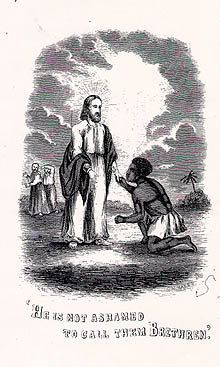 Frontispiece Illustration from Autographs for Freedom |
The Heroic SlaveFrederick Douglass wrote only one work of fiction: this novella, loosely based on a true incident, about a slave who leads a rebellion on board a slave ship. Although it doesn't mention Stowe, it can be read as Douglass' attempt to contest Uncle Tom's Cabin. The novella's description of Madison Washington's appearance closely follows Stowe's first description of Tom. The story Douglass tells, though, allows him to reject her "simple" slave hero (Tom is probably the source for the pious "old slave" Madison encounters in Part II, and whose eloquent praying is a temptation he must resist), and to put in his place a well-spoken black man who fights and kills for his freedom. Douglass does not, however, dismiss Stowe's audience. He published the story twice in 1853 -- serially in his newspaper, and as his contribution to an Anti-Slavery anthology Stowe's publisher brought out (and that began with a poem by Stowe and the accompanying frontispiece at left). But he clearly designed the tale to reach the larger white reading public: one of the most interesting aspects of the novella is the strategic way it tries to lead genteel readers not only to active engagement in the abolitionist cause, but also to grant black slaves the same right to rebel against tyranny that America enshrines in its founders. The novella, however, does not seem to have had many contemporary readers, although it was reissued at least once, in pamphlet form in 1863. |
